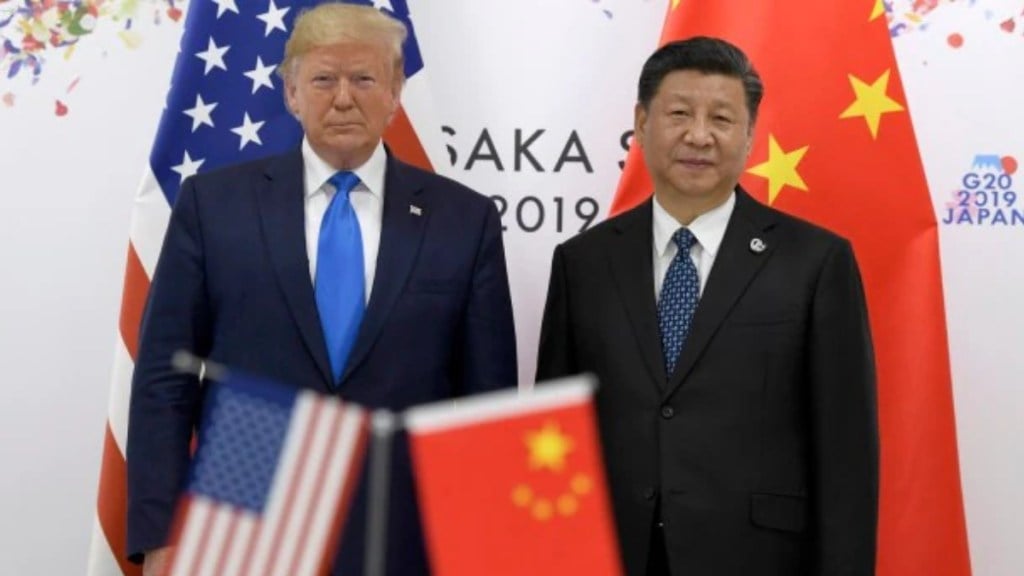US President Donald Trump and Chinese President Xi Jinping are scheduled to speak this week on September 19. This will be their first direct conversation since June. With issues ranging from TikTok and Boeing aircraft to rare earth magnets and Taiwan, the call sets the stage for a potential in-person summit at the Asia-Pacific Economic Cooperation (APEC) meeting in South Korea at the end of October.
Trump posted on Truth Social, noting that “the relationship remains a very strong one!!!” Beijing has yet to confirm the call, though the Chinese foreign ministry emphasised the strategic role of head-of-state diplomacy.
US-China relation
Trump’s second term continues to blend admiration for Xi with assertive trade policies. While sparing China secondary sanctions over Russian oil purchases and supporting Chinese students in the US, Trump has simultaneously pressed Beijing on trade imbalances.
The two nations have suspended extreme tariffs, previously as high as 145% on Chinese goods, but tensions linger over semiconductor controls, rare earth exports, and alleged fentanyl facilitation.
Both sides recognise the need for stability, yet disagreements persist over influence in Global South nations and involvement in Ukraine and Middle East conflicts.
Whats on the agenda?
Trade remains central to the Xi-Modi conversation. Trump is pushing for greater access to rare-earth magnets crucial to US manufacturing, while China seeks relief from punitive tariffs. Semiconductor tensions persist, with the US adding 32 Chinese companies to its entity list and Beijing retaliating with investigations into American chipmakers. TikTok’s future in the US, including the looming “sell-or-be-banned” deadline for ByteDance Ltd., also features prominently, with Treasury and trade officials meeting Chinese counterparts in Madrid to prepare the framework for resolution.
Both sides could secure low-hanging gains to demonstrate progress. A large Chinese order of Boeing aircraft would benefit the US manufacturing sector while showcasing Xi’s willingness to cooperate.
Soybeans are another likely point, with Chinese purchases potentially shifting from Brazil to the US, pleasing American farmers and boosting exports. Facilitating Chinese students’ education in the US could also signal goodwill, easing broader people-to-people tensions amid heightened US immigration scrutiny.
Taiwan and security
Taiwan remains the most contentious issue. China maintains the US should exercise caution regarding arms sales and military training to the self-ruled island it claims as its territory. Trump’s base is wary of deepening US involvement in Asia-Pacific counter-China operations, while regional allies such as the Philippines seek stronger military ties amid escalating South China Sea tensions. Both nations must balance strategic interests with domestic political pressures during the negotiations.
What Trump-Xi talks mean?
The Trump-Xi call represents more than a bilateral discussion. It signals the US and China’s intent to prevent further deterioration in relations. With trade talks resuming and the APEC summit approaching, the engagement could recalibrate global markets and set the tone for industrial, technological, and security cooperation. Observers note that personal diplomacy between Trump and Xi remains key to bridging gaps, particularly on high-stakes matters such as Taiwan, rare earths, and strategic technology exchanges.
Lower-level discussions have paved the way for top-level engagement. Defence Secretary Pete Hegseth and Secretary of State Marco Rubio met with Chinese counterparts last week, while trade officials focused on crafting frameworks that could satisfy Trump’s domestic agenda. With deadlines looming on tariffs and TikTok compliance, the leaders’ conversation will be closely monitored by global investors, policymakers, and international media. Experts expect the dialogue to establish a roadmap for continued negotiations, potentially smoothing tensions ahead of the October summit.
As Trump and Xi prepare to speak, the stakes are high. Both leaders aim to demonstrate progress while protecting strategic interests and domestic political credibility. Success could stabilise the US-China relationship, supporting global economic growth and geopolitical balance. Failure, however, risks further escalation in trade disputes, technological restrictions, and regional security tensions.

